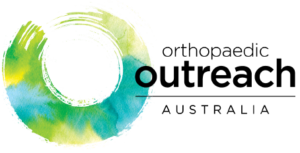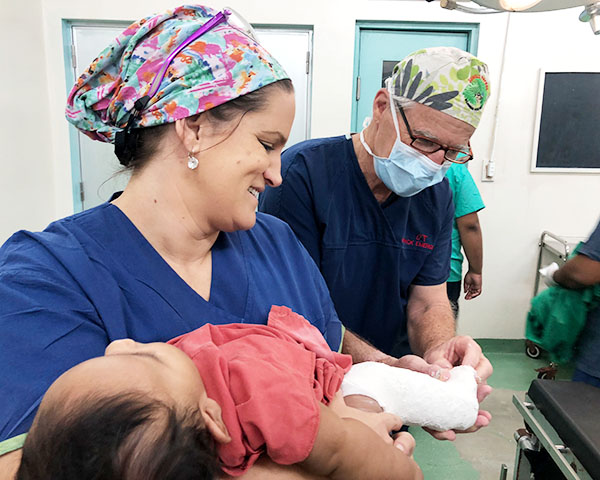Kiribati comprises 33 islands, 21 of which are inhabited. The islands are spread over an area as large as mainland USA. The main island, Tarawa, has a population of over 50,000 and is one of the most densely populated areas in the world.
- 3 islands have a population of about 5,000.
- 15 islands have populations of between 1000 and 5000.
- 2 islands have populations of less than 1000.
Both the geography of Kiribati and the fact that the small islands do not have full time doctors makes any consistency in the screening of orthopaedic patients difficult. Outreach teams have in the past left information (information sheets on “Word” documents) for the local staff to aid them in screening, and to assist them in managing non-specific low back pain and end stage bilateral knee osteoarthritis. This has included patient information sheets translated to help patients self manage knee osteoarthritis and low back pain due to age related degenerative spondylosis, which can conveniently be provided by local medical staff.
The bulk of the population (55%) who live on the main Island where the Outreach team spend their time had been fairly well screened. The remaining 45% of the population who live on other islands, some up to 2 weeks away by boat, are screened at local clinics, not by doctors, but by ‘medical assistants’. Many of the patients from these islands do need assessment and treatment by the Outreach team, but many present with chronic degenerative conditions that are beyond our capacity to treat, particularly those with non specific low back pain, degenerative lumbar spondylosis, or end stage varus pattern osteoarthritis of the knees.
The geography of the country, the absence of doctors on most islands, plus the logistics and cost of transporting patients from distant islands to Tarawa (the main island where the Outreach team is based) will continue to make the consistency of screening of patients coming from these islands difficult.
In general terms, and with consideration of the mix of patients seen on visits over the past 5 years, the patient mix was consistent during this visit.
The caseload for 2019 included greater that 240 patient consultations. Of those that progressed to surgical intervention, there were 3 unilateral and 3 bilateral cases of club foot. These children required multiple procedures completed several days apart in line with the Ponseti method. Soft tissue procedures and delayed presentations of trauma comprising of malunions and non-unions made up the remaining surgical patient load.
There are times when the Outreach team visit is widely advertised, resulting in a greater number of patients from the outer islands being seen. These patients, compared with the Tarawa population, generally have more significant pathology; fracture mal-unions and non-unions, untreated joint dislocations, axonotmotic nerve lesions, and late presentations of congenital talipes equino-varus. TB of the spine also exists with a small number of TB spine patients reviewed.
Opportunities to improve orthopaedic services in Kiribati exist, and although the surgical registrar is relatively new to his position (5 months as of May 2019) his enthusiasm in acquiring orthopaedic knowledge and developing orthopaedic surgical skills has exceeded recent predecessors. This creates great potential for a local surgeon who can provide a good orthopaedic surgical service to Kiribati. Any mentorship from Dr Tuneti (current acting Director of Hospital and Medical Services, and previous surgeon performing orthopaedics) will be advantageous.

